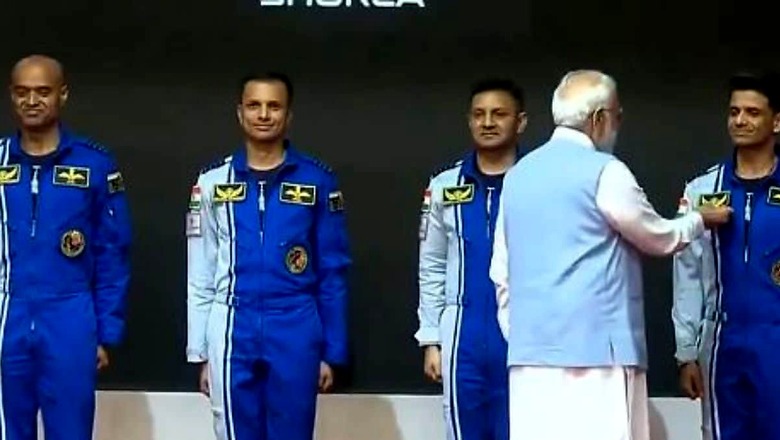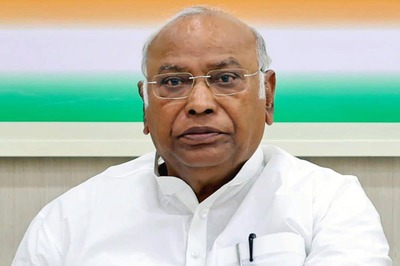
views
Almost five years after the Indian Space Research Organisation (ISRO) announced its first human spaceflight programme, Gaganyaan, Prime Minister Narendra Modi today revealed the names of the first batch of astronaut-designates who will undertake the historic three-day trip to space.
Group Captain P Balakrishnan Nair, Group Captain Ajit Krishnan, Group Captain Angad Pratap and Wing Commander S Shukla are the astronaut-designates that are being trained at the Astronaut Training facility in Bengaluru.
Three of them will fly aboard ISRO’s heaviest launcher – the LVM Mk-3, which has already been re-configured to meet the human rating requirements. The rocket will take the crew into the Low Earth Orbit (LEO) at an altitude of about 400 km where they will remain for the next one to three days. The challenge is to bring the astronauts safely back to Earth.
Cosmonaut Rakesh Sharma, who flew aboard Russia’s Soyuz aircraft in 1984, remains the only Indian to ever travel to space.
ISRO, which has never undertaken any human spaceflights before, is leaving no stone unturned to ensure the safety of the astronauts on board. Only three countries have successfully carried out human spaceflight programmes – the Soviet Union (now Russia), the US and China. If India succeeds, it will become only the fourth country in the world to achieve the feat.
The 2025 Launch Mission
The mission is set for a late 2025 launch, and ISRO has planned over 20 such challenging demonstrations, test vehicle flights and unmanned flights with robots on board before it goes for the maiden mission. There will be four test-abort missions — TV-D1, D2, D3 and D4 and two un-crewed missions (LVM3-G1 and G2) to test every system on the flight.
ISRO is already preparing for the next Test Vehicle (TV-D2) mission, which will be followed by the first of the unmanned flight with robotic payloads later this year, ISRO chairman S Somanath had confirmed in January. It has already completed the flight engine test for the first unmanned mission. The engine will power the upper-stage of the human-rated LVM-Mk3 vehicle.
First Unmanned Flight Later This Year
Setting the stage in October last year, ISRO performed the first test vehicle mission (TV-D1) of Gaganyaan wherein they tested the first crew module (CM) that will carry Indian astronauts during the actual Gaganyaan spaceflight and act as their living quarters. Just when the test rocket ascended 17 km into the air, the abort sequence was initiated, and parachutes were deployed. The target was to test the crew escape system, which it did successfully with a safe touchdown of the crew module in the Bay of Bengal, about 10km from Sriharikota from where it was recovered by a diving team of the Indian Navy.
The space agency had also conducted the safety tests for the parachutes wherein a five-ton dummy mass equivalent to a crew module mass was taken to an altitude of 2.5 km and then dropped using the Indian Air Force’s IL-76 aircraft.




















Comments
0 comment